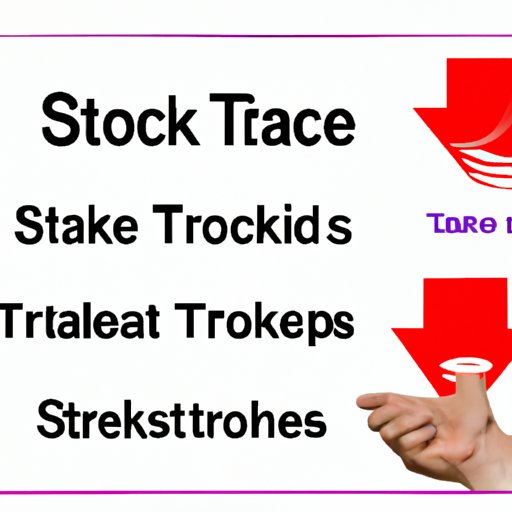
Introduction
A stroke is a severe medical emergency that occurs when blood supply to a part of the brain is blocked or reduced, causing brain cells to die. Stroke symptoms can vary depending on the type of stroke and the part of the brain affected. Understanding how long stroke symptoms last is crucial for prompt medical attention, treatment, and recovery.
Understanding the Duration of Stroke Symptoms: A Comprehensive Guide
There are two main types of strokes: ischemic and hemorrhagic. Ischemic stroke occurs when a blood vessel that supplies blood to the brain is blocked, while hemorrhagic stroke occurs when a blood vessel in the brain ruptures and causes bleeding. Both types of strokes can cause severe and long-lasting symptoms.
Factors that affect the duration of stroke symptoms include the type and severity of the stroke, the size and location of the affected area of the brain, and the general health of the patient. Early medical intervention is critical for reducing the duration of stroke symptoms and improving the chances of recovery.
The Timeline of Stroke Symptoms: How Long to Expect Them to Last?
After a stroke, symptoms can vary and affect patients differently, depending on several factors. A timeline for the duration of stroke symptoms can be difficult to predict, as symptoms may vary from one patient to the next. However, some general guidelines can help you understand how long to expect specific types of stroke symptoms to last.
Generally, stroke symptoms will last for at least 24 hours, and some may continue to linger for several weeks or months. However, some stroke symptoms can last for several years or may become permanent. If you experience any symptoms that last longer than expected, you should seek medical attention immediately.
The First Hour after a Stroke: How to Recognize and Respond to Symptoms
Quick recognition and response to stroke symptoms are crucial for minimizing the duration and severity of the symptoms. If you or someone you know experiences any of the following symptoms, seek medical attention immediately:
- Numbness or weakness in the face, arms, or legs, especially on one side of the body.
- Difficulty speaking or understanding speech.
- Confusion or loss of balance or coordination.
- Sudden severe headache with no known cause.
Before medical help arrives, you can take some first aid measures to help minimize the duration and severity of the symptoms:
- Stay calm and try to keep the patient calm.
- Do not give the patient any food or drink, including medication, unless advised by medical professionals.
- If the patient is conscious and breathing normally, place them in a comfortable position and keep them warm.
The Impact of Delayed Treatment on Stroke Symptoms Duration
Delayed treatment for stroke can increase the duration and severity of stroke symptoms and lead to life-threatening complications. Delayed treatment can also increase the risk of permanent brain damage and long-term disability.
To prevent delayed treatment and promote early intervention, it is crucial to educate people about stroke symptoms, risk factors, and the importance of seeking medical help immediately. People who have a higher risk of stroke should seek medical advice and take steps to reduce their risk factors under the guidance of a medical professional.
Recovering from a Stroke: What to Expect and How Long It Takes
Stroke recovery is a gradual process that takes time and patience. The timeline for stroke recovery can vary depending on the severity and type of stroke and the patient’s overall health and age. Generally, stroke recovery occurs in three stages: acute care, rehabilitation, and ongoing management. Acute care focuses on stabilizing the patient’s condition and treating life-threatening complications, while rehabilitation helps the patient regain lost abilities and improve their quality of life.
The duration of stroke recovery can range from several weeks to months or even years, depending on the extent of brain damage and the patient’s overall health. Rehabilitation may include physical therapy, occupational therapy, speech therapy, and other interventions aimed at restoring function and promoting independence.
Preventing Another Stroke: Long-term Management of Stroke Symptoms
Preventing another stroke is crucial for recovering stroke patients. Several risk factors can increase the likelihood of having another stroke, such as high blood pressure, smoking, and diabetes. Long-term management of stroke symptoms involves addressing these risk factors and taking steps to reduce the risk of stroke recurrence. Physicians may prescribe medication or recommend lifestyle changes, such as a healthy diet, regular exercise, and stress management techniques, to help manage risk factors.
The Role of Rehabilitation in Reducing the Duration of Stroke Symptoms
Rehabilitation plays a vital role in reducing the duration of stroke symptoms and promoting recovery. Rehabilitation may help patients recover lost function, improve their quality of life, and reduce the risk of disability. Different types of rehabilitation may include physical therapy, speech therapy, occupational therapy, and psychological counseling. Rehabilitation services can be found in hospitals, clinics, and long-term care facilities. Patients and their families should work with healthcare professionals to find the most appropriate rehabilitation services for their needs.
Conclusion
Understanding how long stroke symptoms last is crucial for prompt medical attention, treatment, and recovery. Stroke symptoms can vary from patient to patient and depend on several factors, including the type and severity of the stroke, the size and location of the affected area of the brain, and the general health of the patient. Quick recognition and response to stroke symptoms can minimize the duration and severity of the symptoms and improve the chances of recovery. Rehabilitation plays a vital role in reducing the duration of stroke symptoms and promoting recovery, so it is essential to find appropriate rehabilitation services tailored to the patient’s individual needs.





